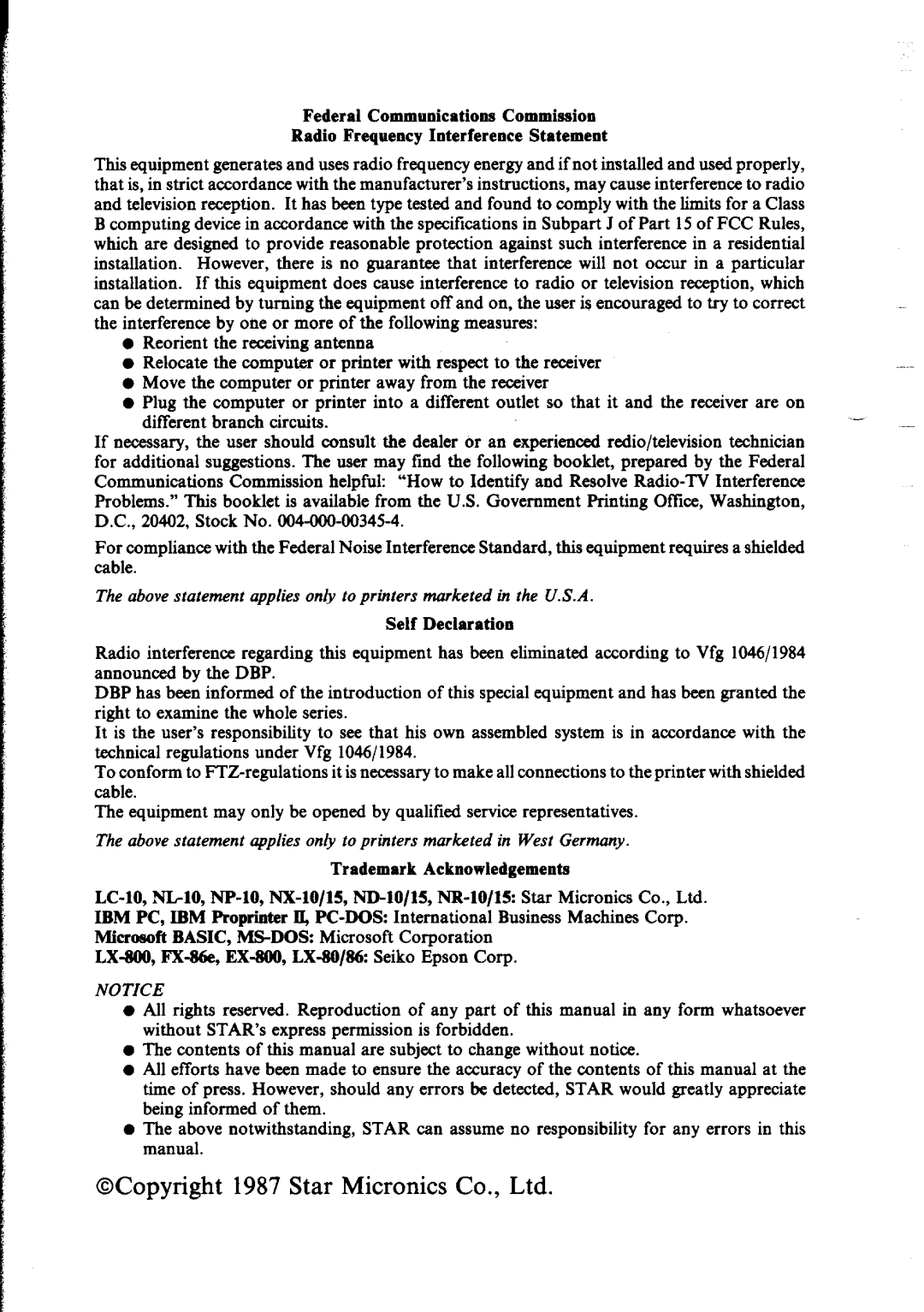
Federal Communications Commission
Radio Frequency Interference Statement
This equipment generates and uses radio frequency energy and if not installed and used properly, that is, in strict accordance with the manufacturer’s instructions, may cause interference. to radio and television reception. It has been type tested and found to comply with the limits for a Class B computing device in accordance with the specifications in Subpart J of Part 15 of FCC Rules, which are designed to provide reasonable protection against such interference in a residential installation. However, there is no guarantee that interference will not occur in a particular installation. If this equipment does cause interference to radio or television reception, which can be determined by turning the equipment off and on, the user is encouraged to try to correct the interference by otle or more of the following measures:
•Reorient the receiving antenna
•Relocate the computer or printer with respect to the receiver
•Move the computer or printer away from the receiver
•Plug the computer or printer into a different outlet so that it and the receiver are on
different branch circuits. | |
If necessary, the user should consult the dealer or an experienced redio/television technician | |
for additional suggestions. The user may find the following booklet, prepared by the Federal | |
helpful: “How to Identify and Resolve | |
Problems.” This booklet is available from the U.S. Government Printing Office, Washington, DC., 20402, Stock No.
For compliance with the Federal Noise Interference Standard, this equipment requires a shielded cable.
The above statement applies only to printers marketed in the U.S.A.
Self Declaration
Radio interference regarding this equipment has been eliminated according to Vfg 1046/1984 announced by the DBP.
DBP has been informed of the introduction of this special equipment and has been granted the right to examine the whole series.
It is the user’s responsibility to see that his own assembled system is in accordance with the technical regulations under Vfg 1046/1984.
To conform to
The equipment may only be opened by qualified service representatives.
The above statement applies only to printers marketed in West Germany.
Trademark Acknowledgements
IBM PC, IBM Proprinter II,
Microsoft BASIC, MSDOS: Microsoft Corporation
NOTICE
•All rights reserved. Reproduction of any part of this manual in any form whatsoever without STAR’s express permission is forbidden.
•The contents of this manual are subject to change without notice.
•All efforts have been made to ensure the accuracy of the contents of this manual at the time of press. However, should any errors be detected, STAR would greatly appreciate being informed of them.
•The above notwithstanding, STAR can assume no responsibility for any errors in this manual.
@Copyright 1987 Star Micronics Co., Ltd.
